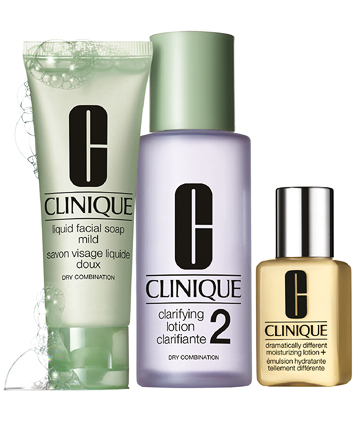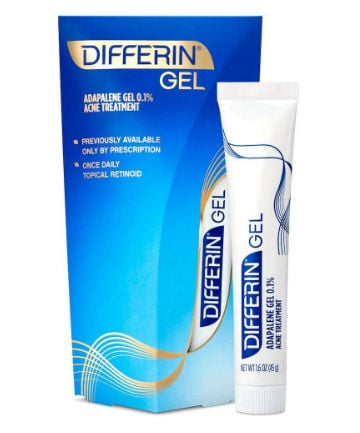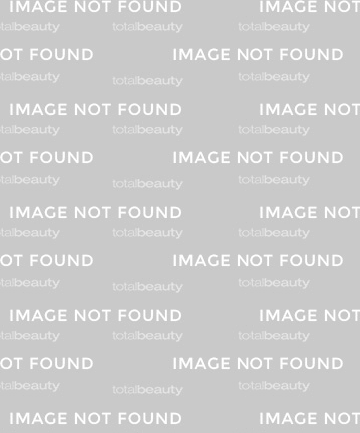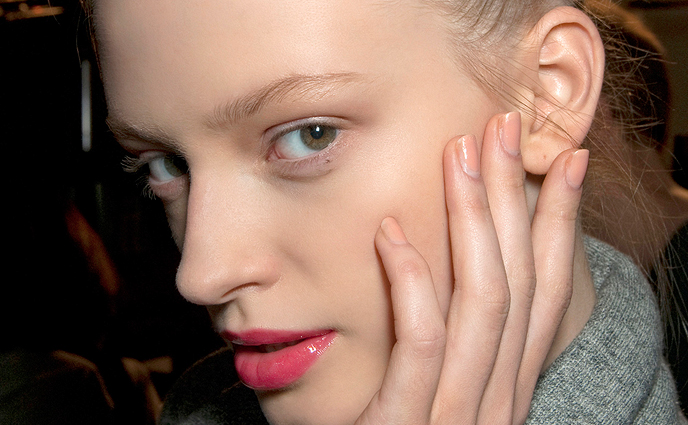When I first started noticing breakouts, I realized that toothpaste over my acne spots wasn't going to cut it. I turned to the drugstore, mecca of acne solutions, to find something "stronger." I reached for beauty aisle standbys, like St. Ives Apricot Scrub and Neutrogena cleanser. Drugstore products are cheap (everything I bought was under $15), but all of the different products add up. Walking the aisles of the drugstore, you'll find things you never thought you would need — but if it said "acne-clearing" or "breakout-banishing," it went into my basket.
These remedies didn't do anything for my acne, so I decided I needed to look elsewhere for a cure.
These remedies didn't do anything for my acne, so I decided I needed to look elsewhere for a cure.
When the drugstore treatments failed me, I figured it was because they were too cheap. In my mind, expensive = more effective. So I plunked down my cash for high-end skin care in the department store. Some of the products I tried: Clinique 3-Step System ($89.50 for the bundle), and Bath & Body Works Patricia Wexler products (now discontinued). I also tried Shiseido's blemish-clearing products, which are around $22 to $33 each.
These products work great for some people — I wasn't one of them.
These products work great for some people — I wasn't one of them.
After products failed, I went to a fancy skin care spa to have my acne extracted by a licensed esthetician. I'd get an acne facial, which usually consisted of a cleanse, extractions and some sort of a glycolic peel.
The extractions did flatten the acne out, which seemed to cut down the time blemishes spent lurking on my face, but they left a more noticeable mark than if I let them go away on their own. This made my acne easier to cover up with makeup -- it was like reducing the pimple from 3-dimensional to 2-dimensional — and it meant I could spackle on concealer and (almost) pretend nothing was there.
That's when I took matters into my own hands — literally. I started picking at my skin. I knew it was wrong (any skin expert will tell you to avoid this), but popping the pimples that came to a head made me feel like I was doing something about my acne, and getting the "junk" in my skin out felt logical.
Popping did more harm than good. It didn't stop me from breaking out, and the ones that I popped left red marks that didn't go away. It became a daily habit, and I found myself probing and searching my skin for new blemishes on a daily basis.
The extractions did flatten the acne out, which seemed to cut down the time blemishes spent lurking on my face, but they left a more noticeable mark than if I let them go away on their own. This made my acne easier to cover up with makeup -- it was like reducing the pimple from 3-dimensional to 2-dimensional — and it meant I could spackle on concealer and (almost) pretend nothing was there.
That's when I took matters into my own hands — literally. I started picking at my skin. I knew it was wrong (any skin expert will tell you to avoid this), but popping the pimples that came to a head made me feel like I was doing something about my acne, and getting the "junk" in my skin out felt logical.
Popping did more harm than good. It didn't stop me from breaking out, and the ones that I popped left red marks that didn't go away. It became a daily habit, and I found myself probing and searching my skin for new blemishes on a daily basis.
Even with regular facials, my acne wasn't going away. I decided I needed professional help: a dermatologist.
Over the span of several months, I went to three different dermatologists. Retin-A (to unclog pores), Differin (to dry up active acne and prevent more from forming), Skinoren and Clindamysin (to kill acne bacteria) were just a few of the prescriptions they wrote me, sometimes without even taking the time to examine my skin. They were all about $30 each. The doctor visits were around $20 each with insurance.
My skin didn't seem to take well to the meds. The retinoids made me feel like someone rubbed a habanero pepper all over my skin. The other prescriptions made my (already dry) skin even drier, and turned my face red.
Seeing a dermatologist didn't help my case — in fact, I feel like their one-size-fits-all approach to treating acne actually hurt it. Some of them didn't even take a second look at my skin before scribbling out a standard acne prescription — even if I told them similar medications hadn't worked for me.
The last dermatologist I visited told me a chemical peel might speed up my skin's renewal process. Envisioning the clear skin underneath all of those layers of acne, I decided to give it a try.
Over the span of several months, I went to three different dermatologists. Retin-A (to unclog pores), Differin (to dry up active acne and prevent more from forming), Skinoren and Clindamysin (to kill acne bacteria) were just a few of the prescriptions they wrote me, sometimes without even taking the time to examine my skin. They were all about $30 each. The doctor visits were around $20 each with insurance.
My skin didn't seem to take well to the meds. The retinoids made me feel like someone rubbed a habanero pepper all over my skin. The other prescriptions made my (already dry) skin even drier, and turned my face red.
Seeing a dermatologist didn't help my case — in fact, I feel like their one-size-fits-all approach to treating acne actually hurt it. Some of them didn't even take a second look at my skin before scribbling out a standard acne prescription — even if I told them similar medications hadn't worked for me.
The last dermatologist I visited told me a chemical peel might speed up my skin's renewal process. Envisioning the clear skin underneath all of those layers of acne, I decided to give it a try.
My dermatologist advised me to get a glycolic acid chemical peel, which he said would exfoliate my skin quickly so the prescriptions I was on would work faster.
I started with a 30-percent glycolic acid peel and got one every two weeks for six months — 12 peels total. With each peel, the percentage of acid and time it was left on my skin increased. At four months, I was doing a 75-percent peel for five minutes.
The 30-percent peel didn't sting too much, but the 75-percent peel made my eyes water. Afterwards, they'd remove the acid with wet cotton balls and do extractions — my derm told me this was because, with the top layer of skin removed, the extractions would work better.
At first, my skin did look better and I had the highest hopes that I had found the cure. But after my fourth peel, I started breaking out again. The extractions were leaving me with red scars (which the derm said would fade — with more peels!), and my face would stay red for about a week after the peel — not a pretty look.
I started with a 30-percent glycolic acid peel and got one every two weeks for six months — 12 peels total. With each peel, the percentage of acid and time it was left on my skin increased. At four months, I was doing a 75-percent peel for five minutes.
The 30-percent peel didn't sting too much, but the 75-percent peel made my eyes water. Afterwards, they'd remove the acid with wet cotton balls and do extractions — my derm told me this was because, with the top layer of skin removed, the extractions would work better.
At first, my skin did look better and I had the highest hopes that I had found the cure. But after my fourth peel, I started breaking out again. The extractions were leaving me with red scars (which the derm said would fade — with more peels!), and my face would stay red for about a week after the peel — not a pretty look.









